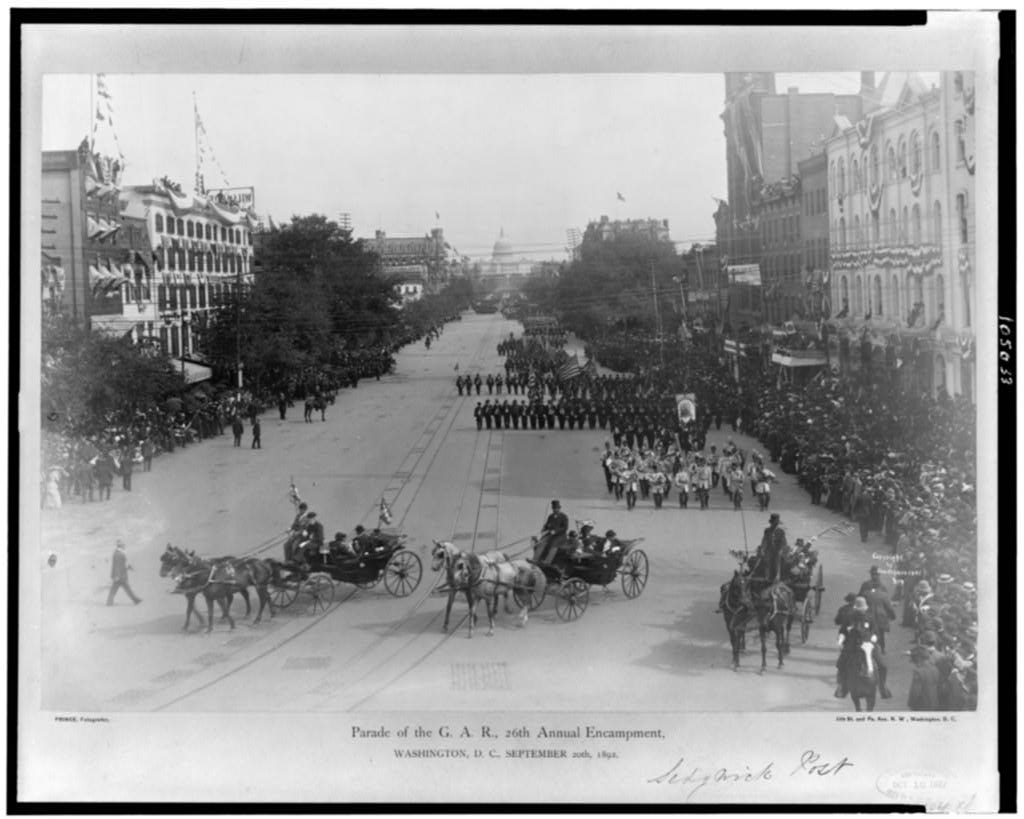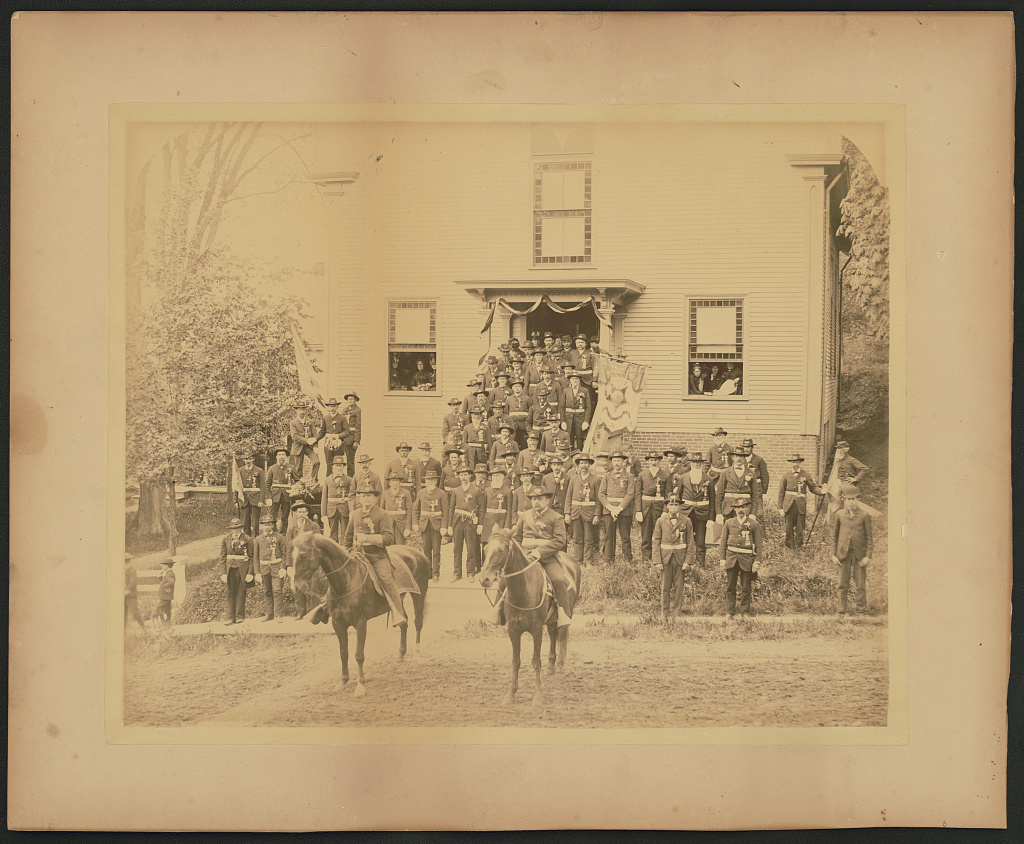
From the aftermath of the Civil War to the onset of World War I, the Grand Army of the Republic (GAR) reigned supreme as the largest Veterans’ organization in the nation. It was founded by Benjamin F. Stephenson, an Illinois-born doctor who served as a surgeon in an infantry regiment from his home state during the Civil War. He chartered the first GAR post in Decatur, Illinois, in 1866 with all of twelve members.
The organization took off from there as Union Veterans over the next twenty-five years established hundreds and then thousands of posts in communities across the northern half of the country. The GAR reached the peak of its size and influence in the early 1890s when its membership exceeded 400,000. Although initially formed as a fraternal organization, the GAR evolved into a powerful political interest group that played a pivotal role in the expansion of the Civil War pension system.
The GAR’s motto of “Fraternity, Charity, and Loyalty” aptly characterized its mission for most members. The organization promoted fraternity among Veterans through regular meetings and camp-fires at local posts. At these gatherings, they could share stories and enjoy the fellowship of their former comrades-in-arms. GAR members from different posts also had the opportunity to socialize with one another at the annual state conventions and national gatherings called encampments that attracted thousands of attendees.
Posts also engaged in a variety of charitable activities to raise money for needy or disabled Veterans as well as widows and orphans within the community. Finally, the GAR showed its loyalty to the nation by erecting monuments and memorials and preserving artifacts and records to ensure that people did not forget the Civil War and the great service to the country rendered by Union Veterans. Many of the materials collected by GAR posts are now owned by the Library of Congress or the Smithsonian.
Early on in its history, the GAR sought to distance itself from partisan politics and disavowed any intent to seek the election of Veterans to political office. However, as the organization grew in size in the 1880s, it became an important voting bloc that the Republican and Democratic parties both courted. In 1887, the GAR successfully lobbied Congress to pass a bill that granted a pension to almost any Union Veteran considered to be disabled, regardless of whether his condition was related to his military service.
President Grover Cleveland, a Democrat, earned the ire of the GAR when he promptly vetoed it. In the 1888 presidential election, the organization threw its support behind Republican candidate and fellow GAR member Benjamin Harrison, who secured a narrow electoral victory. Two years later, Harrison signed another version of the bill into law, which doubled the number of Veterans and their dependents who qualified for a pension, from 489,000 to just under a million.

Outside the realm of politics, one of the GAR’s lasting contributions to American history was the creation of Memorial Day. In 1868, the commander-in-chief of the GAR, General John A. Logan, issued a general order directing members to decorate the graves of the Union war dead with flowers on May 30th. In the same proclamation, he also expressed the hope that this observance would continue in subsequent years. His desire to establish a day of remembrance was fulfilled, as Memorial Day became not only an annual tradition but also a national holiday to honor all who died in service during any conflict.
As Civil War veterans grew older and their numbers declined, the influence of the GAR also waned. The final national encampment was held in 1949 and the last living member passed away in 1956. Although the GAR faded from national prominence and then disappeared altogether, its mantle was picked up by the Veterans of Foreign Wars, the American Legion, and other groups. Today, there are over a hundred VA-recognized Veteran Service Organizations that assist Veterans and advocate for their rights and interests.
By Alexandra Boelhouwer
Virtual Student Federal Service Intern, Veterans Benefits Administration
Share this story
Related Stories

History of VA in 100 Objects
Object 96: Postcard of Veterans Vocational School
In 1918, the government created the first nationwide vocational training system to help disabled Veterans acquire new occupational skills and find meaningful work. Over the next 10 years, more than 100,000 Veterans completed training programs in every field from agriculture and manufacturing to business and photography.

History of VA in 100 Objects
Object 95: 1840 Census of Pensioners
In a first, the 1840 census collected data on Veterans and widows receiving a pension from the federal government. The government published its findings in a stand-alone volume titled “A Census of Pensioners for Revolutionary or Military Services.”

History of VA in 100 Objects
Object 94: Southern Branch of the National Home
The Southern Branch of the National Home for Disabled Volunteer Soldiers opened in Hampton, Virginia, in late 1870. The circumstances surrounding the purchase of the property, however, prompted an investigation into the first president of the National Home’s Board of Managers, Benjamin Butler.


